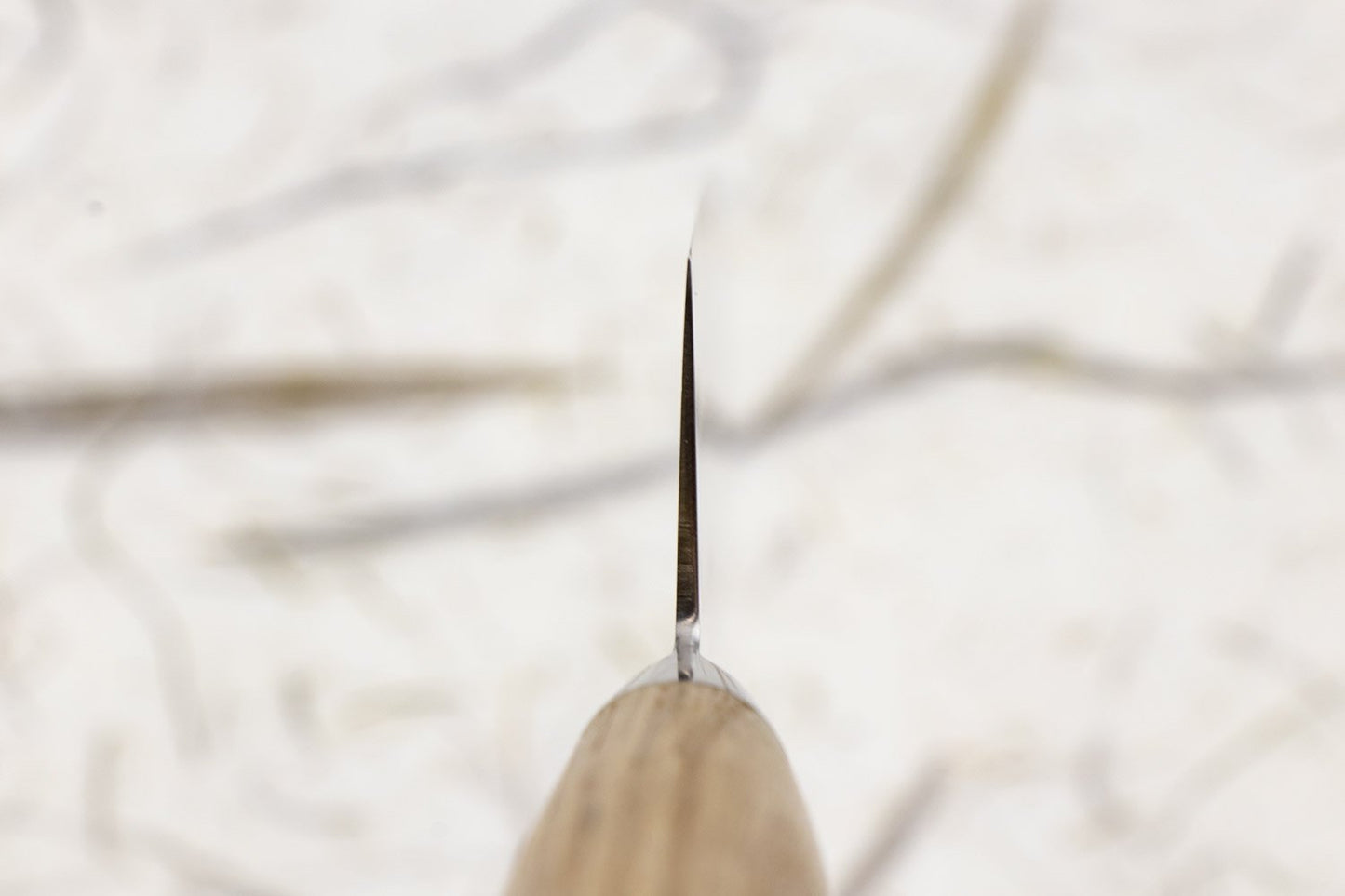Tadafusa Hocho Kobo HK-2 Santoku 170mm
Tadafusa Hocho Kobo HK-2 Santoku 170mm
Couldn't load pickup availability
About the Shape - This is also a multi purpose knife, but with a slight vegetable bias. Santoku means 'Three Virtues' or 'To solve Three Problems'. The virtues or problems are slicing, dicing and mincing. Santoku is usually found in 160mm - 190mm lengths. These are more and more popular in Western kitchens due to the unique shape and smaller easy to handle size.
About Tadafusa Hocho Kobo -Tadafusa knives are manufactured in the city of Sanjo, part of the Niigata prefecture. Not only known as a traditional centre for tool and knife forging, but also for the finest sake Japan has to offer. Great booze AND knives? Let’s go! The core of the blade is made from a hard SLD steel but is clad in softer stainless steel. The softer, stainless steel acts like a cushion and protects the harder steel.
These Tadafusa knives were developed by Fumie Shibata, a female industrial designer who sought out input from the female perspective. They feature a tapered tang for a great balance, the handle is made from semi-charcoaled chestnut wood which helps make it very sanitary and corrosion resistant, and no, they aren’t just for ladies.
| Shape | Santoku |
|---|---|
| Blade Length | | |
| Blade Height | |
| Blade Thickness Above Heel | |
| Weight | |
| Steel Type |
Rust Prone ⓘ
This knife can rust, click to learn more.
|
| Rockwell Hardness | 60 - 62 |
| Edge/Bevel | |
| Handle | Western Handle - Chestnut Metal Bolster |
| Knifeline | Tadafusa Hocho Kobo |
| Made in |
Knife Care
Knife Care
Shipping and Returns
Shipping and Returns
We aim to ship your order within 1 business day at Knifewear, if there is a hold up, we'll aim to let you know and give you a timeline.
We offer $3 shipping on orders over $100* anywhere in Canada and $200* to customers in the USA. We ship worldwide, and offer up to the minute rates from our shipping partner DHL.
*Konro Grills and some other larger items are excluded from the free shipping offer.
How do I make a return on an online order?
No worries, we've got you sorted. Head over to https://knifewear.com/returns and follow the prompts.
Can I pick up my order Curbside / At the store?
Absolutely, as long as all the items you are looking for are in stock at the location you want to pickup from, you'll be able to select that at the checkout. If one or more items aren't at your preferred location we are happy to ship it to you.
Request Additional Info
Request Additional Info







